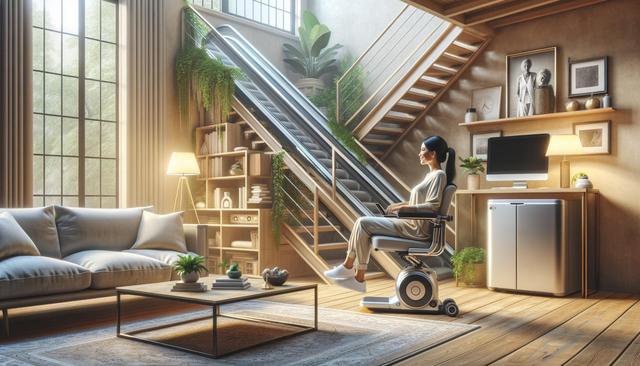Understanding the Purpose and Function of Stair Lifts
Stair lifts are mechanical devices designed to help individuals travel up and down stairs with ease. Installed directly onto staircases, they provide a safe and reliable means of mobility for people who experience difficulty climbing stairs due to age, injury, disability, or chronic health conditions. These lifts generally consist of a motorized chair or platform that glides along a rail system mounted to the staircase. With easy-to-use controls, most stair lifts are designed to be intuitive and user-friendly, making them accessible to users of varying physical capabilities.
For many households, stair lifts serve as a critical solution to maintaining a multi-level living environment without compromising safety. They prevent the need for costly home modifications or relocation to a single-level dwelling. Additionally, by reducing the physical strain of stair navigation, stair lifts can help minimize the risk of falls and other related injuries, increasing peace of mind for both users and caregivers.
Improving Independence and Quality of Life
One of the most significant benefits of stair lifts is the restoration of independence. For individuals who may otherwise require assistance navigating their own homes, a stair lift allows for private and autonomous movement between floors. This not only preserves dignity but also contributes to emotional well-being. Regaining the ability to move freely within one’s home can reduce feelings of isolation, dependency, and anxiety.
In terms of daily routine, stair lifts can make a notable difference. Users can:
- Access upper floors without relying on others
- Carry small items with them thanks to seat designs with armrest storage or attachments
- Reduce time and effort spent moving from one level to another
Increased mobility within the home often translates to improved overall health and engagement in daily activities. With fewer physical barriers, individuals are more likely to participate in household tasks, hobbies, and social interactions, all of which support mental and physical wellness.
Safety Features and Customization Options
Today’s stair lifts are equipped with a variety of safety features designed to protect users during operation. These include seat belts, swivel seats for safe entry and exit, obstruction sensors to stop the lift if something is in the way, and battery backups to ensure functionality during power outages. These elements work together to create a secure and dependable user experience.
Additionally, stair lifts come in models that can be customized to fit different staircase layouts, including straight, curved, and even outdoor configurations. Many manufacturers offer:
- Foldable seats and footrests for space-saving
- Remote controls for calling or sending the lift from another floor
- Weight capacity options to accommodate various needs
These customization possibilities ensure that stair lifts can be adapted to meet the unique requirements of each home and individual, further increasing their practicality and comfort.
Cost Considerations and Financial Support
While the cost of installing a stair lift can vary based on staircase complexity and lift features, it is often a worthwhile investment in long-term safety and accessibility. For many, the expense is significantly less than moving into a new, more accessible home or paying for regular in-home assistance focused on mobility support.
There are also financial assistance options that may help offset the cost of a stair lift. These can include:
- Government grants or health care funding programs
- Insurance coverage in specific cases
- Non-profit organization support for individuals with limited income
Before making a purchase, it’s recommended to consult with a mobility specialist who can provide an in-home assessment and offer guidance on available models and potential funding resources.
Choosing the Right Stair Lift for Your Needs
Selecting the appropriate stair lift involves evaluating several factors, including stairway design, user mobility level, and personal preferences. A professional assessment ensures that the selected model is compatible with the home’s structure and the user’s safety requirements. In addition to physical features, users should also consider the warranty, service availability, and customer support offered by the provider.
Questions to consider include:
- Is the stair lift easy to operate for the intended user?
- Does the seat offer adequate comfort and support?
- Are maintenance and repair services readily accessible?
By taking a thoughtful approach to selection and installation, homeowners can ensure that the stair lift serves its purpose effectively and remains a reliable part of the household for years to come.




Leave a Reply